Search
Remove Ads
Advertisement
Search Results
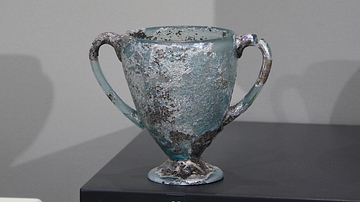
Image
Roman Two-handled Glass Cup
A two-handled glass cup from Roman Tarentum, southern Italy. 1st century BCE. (National Archaeological Museum of Taranto, Italy)
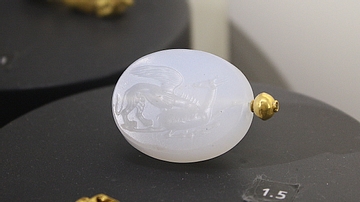
Image
Seal with a Griffin Attacking a Fawn
A chalcedony and gold seal depicting a griffin attacking a fawn. Tarentum, southern Italy. 300-275 BCE. (National Archaeological Museum of Taranto, Italy)
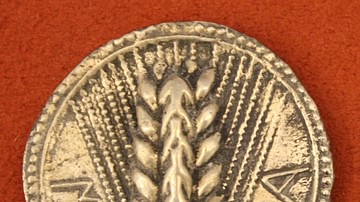
Collection
Trade & Commerce in Ancient Greece
The ancient Mediterranean was a busy place with trading ships sailing in all directions to connect cities and cultures. The Greeks were so keen on the rewards of trade and commerce that they colonized large parts of the coastal Mediterranean...
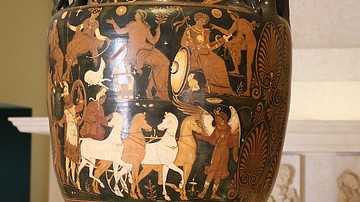
Image
Red-Figure Volute Krater
A red-figure volute krater. 330 BCE, Tarentum. (Archaeological Museum of Taranto, Italy)
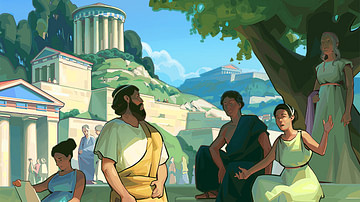
Article
Greek Mathematics
Greek mathematics, the study of numbers and their properties, patterns, structure, space, apparent change, and measurement, is said to have originated with Thales of Miletus (l. c. 585 BCE) but was clearly understood during the periods of...
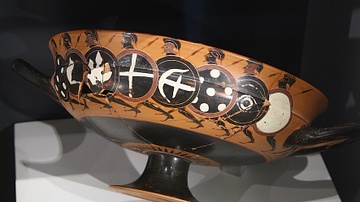
Image
Kylix with Black-Figure Hoplites
A black-figure kylix (drinking cup) with Greek hoplite warriors. Tarentum, 550-520 BCE.
(National Archaeological Museum, Taranto, Italy)

Image
Tanagra Figurine of a Female
This small terracotta figurine is part of the so-called "Tanagra Figurines", which represent wealthy middle-class women. These statuettes served as votive and funerary objects, carrying a symbolic meaning connected with the status and role...
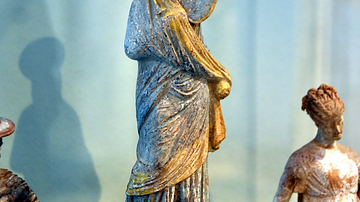
Image
Tanagra Figurine
This small terracotta figurine is part of the so-called "Tanagra Figurines", which represent wealthy middle-class women. These statuettes served as votive and funerary objects, carrying a symbolic meaning connected with the status and role...
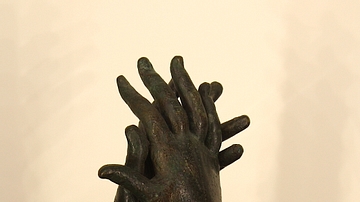
Image
Bronze Hands Nutcracker
A nutcracker in the form of bronze hands with gold decoration. 4th-3rd century BCE, Tarentum. (Archaeological Museum of Taranto, Italy)
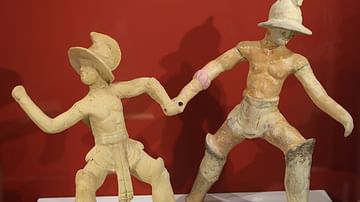
Image
Roman Terracotta Gladiators
Terracotta gladiators, Tarentum, southern Italy, late 1st century BCE.
National Archaeological Museum of Taranto, Italy.